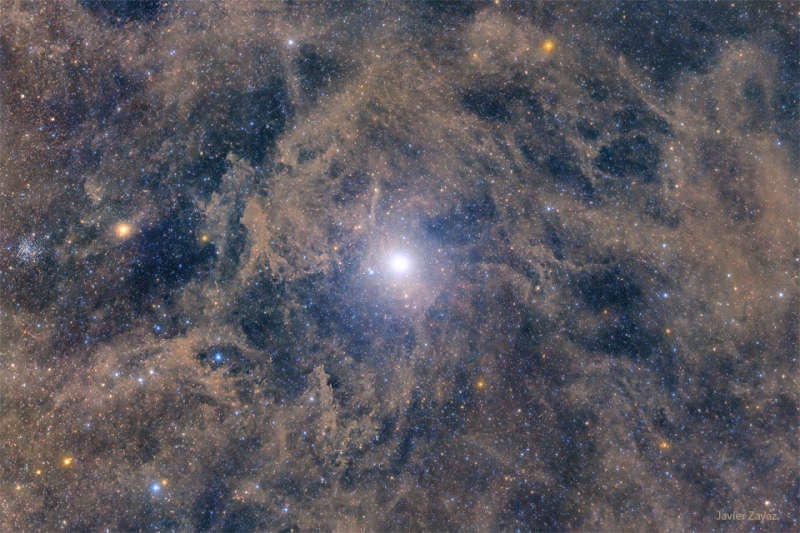
|
Credit & Copyright: Javier Zayaz
Explanation:
Why is Polaris called the North Star?
First,
Polaris is the nearest
bright star toward the north
spin axis of the Earth.
Therefore, as the Earth turns, stars appear to revolve around
Polaris,
but Polaris itself always stays in the same northerly direction --
making it the
North Star.
Since no bright star is near the
south spin axis of the Earth, there is currently
no bright South Star.
Thousands of years ago, Earth's spin axis pointed in a slightly different direction
so that
Vega was the North Star.
Although Polaris is
not the brightest star on the sky,
it is easily located because it is
nearly aligned with two stars in the cup of the
Big Dipper.
Polaris is near the center of the eight-degree wide
featured image,
a digital composite of hundreds of exposures that brings out faint gas and
dust of the
Integrated Flux Nebula (IFN) all over the frame as
well as the
globular star cluster
NGC 188 on the far left.
The surface of
Cepheid Polaris slowly
pulsates,
causing the famous star to
change its brightness
by a few percent over the course of a few days.
Explore Your Universe:
Random APOD Generator
|
January February March April May June July August September October November December |
| ||||||||||||||||||||||||||||||||||||||||||||||||
NASA Web Site Statements, Warnings, and Disclaimers
NASA Official: Jay Norris. Specific rights apply.
A service of: LHEA at NASA / GSFC
& Michigan Tech. U.
Based on Astronomy Picture
Of the Day
Publications with keywords: polaris
Publications with words: polaris
See also:
